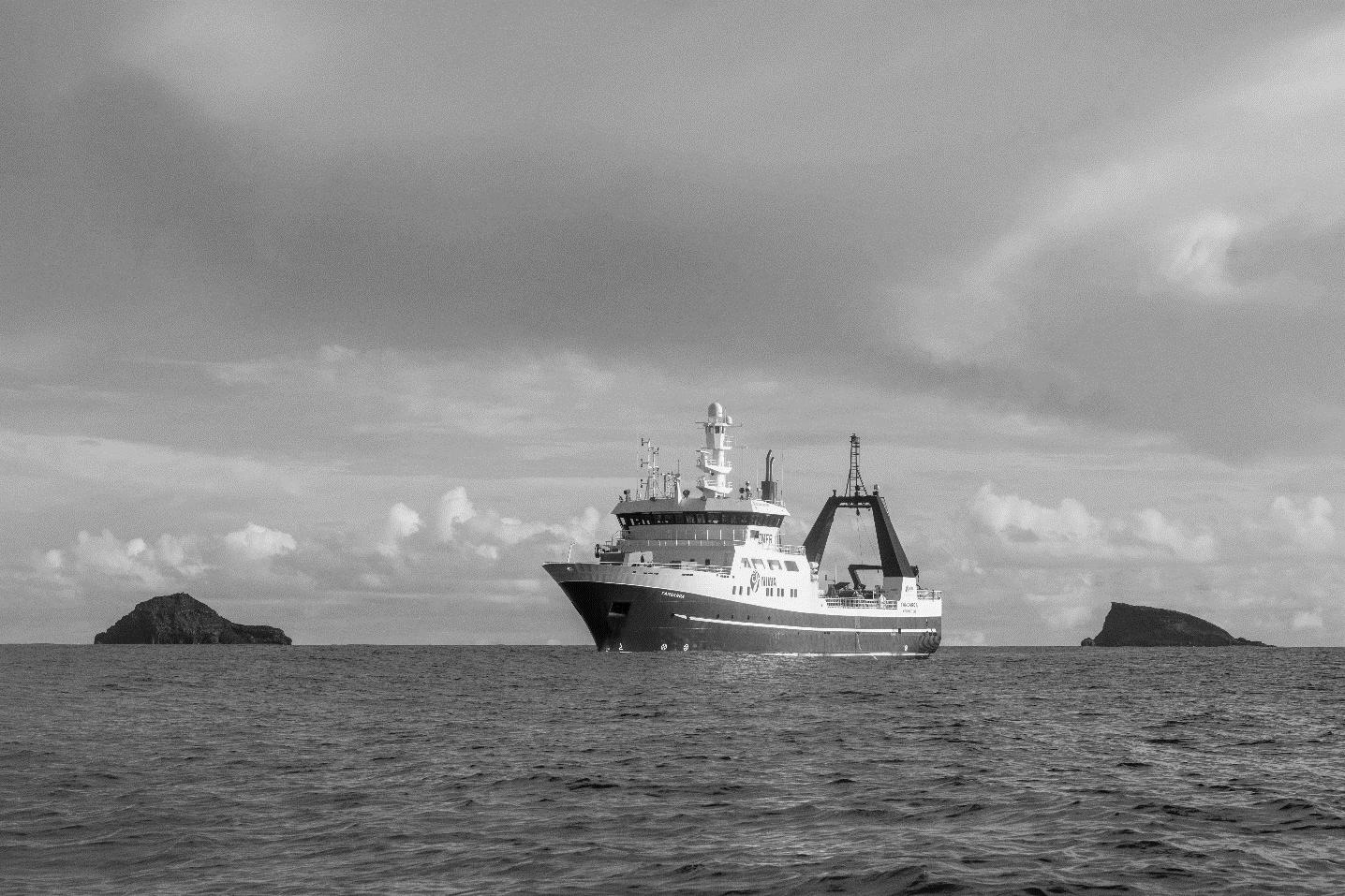
14 minute read
Statement of Core Purpose Outcomes
The information in this section of the Annual Report demonstrates how NIWA is delivering on its expected outcomes.
Our purpose, set out in our Statement of Core Purpose, is to:
Advertisement
• enhance the economic value and sustainable management of
Aotearoa New Zealand’s aquatic resources and environments • provide understanding of climate and the atmosphere • increase resilience to weather and climate hazards to improve the safety and wellbeing of New
Zealanders. We are expected to fulfil our purpose through the provision of research and transfer of technology and knowledge in partnership with key stakeholders and partners, including industry, government and Māori, to achieve six key outcomes:
1. Increase economic growth through the sustainable management and use of aquatic resources. 2. Grow renewable energy production through developing a greater understanding of renewable aquatic and atmospheric energy resources. 3. Increase the resilience of New Zealand and South-West Pacific islands to tsunami and weather and climate hazards, including drought, floods and sealevel change. 4. Enable New Zealand to adapt to the impacts and exploit the opportunities of climate variability and change and mitigate changes in atmospheric composition from greenhouse gases and air pollutants. 5. Enhance the stewardship of New Zealand’s freshwater and marine ecosystems and biodiversity. 6. Increase understanding of the Antarctic and Southern Ocean climate, cryosphere, oceans and ecosystems and their longer-term impact on
New Zealand.
RV Tangaroa with the peaks of the Hunga Tonga-Hunga Ha’apai (HT–HH) volcano in the background. NIWA is part of a global effort to understand what happened the day the HT-HH volcano violently erupted and to investigate the consequences of the massive eruption. [NIWA-Nippon Foundation TESMaP/Rebekah Parsons-King]
PROJECT KEY ACHIEVEMENTS SECTOR IMPACT
Providing real-time hydrometric information

NIWA’s Environmental Monitoring Field Teams manage and operate a vast array of hydrometric data collection stations (more than 300 sites of water level, water flow or rainfall) across all regions and sectors of New Zealand, providing near real-time, high-quality information to commercial clients.
For almost 20 years NIWA has been managing Christchurch City Council’s hydrometric network of more than 90 monitoring stations, supplying near real-time data for flood management, planning and consent requirements. Data platforms like Aquarius Webportal provide easier client access for quicker informed decision making. Water users across the primary, irrigation, electricity and local authority sectors are provided with accurate data forecasting products and data visualisation tools to enable them to make informed decisions on water use, efficient management of their water resources and sustainable use and allocation.
Growing the aquaculture industry The experimental commercial-scale, landbased recirculating aquaculture system for the production of high-value finfish at the Northland Aquaculture Centre is under construction.
Detailed design and infrastructure works included upgraded electrical supply, water supply and discharge pipelines, drum filter discharge reservoir and pipeline to the anaerobic digester. Fish culture tanks and water treatment basins are complete and water tightness testing is underway. The plant is expected to be operational in early 2023. At full capacity, it will demonstrate the practical use of this technology for the commercial, whole-of-cycle production of premium kingfish, and will sustainably produce about 600 tonnes of kingfish annually.
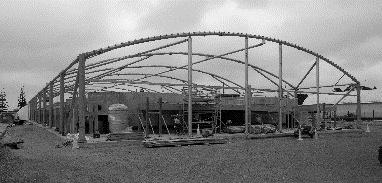
The unit is central to sector growth, both within New Zealand and globally and will contribute to the sector achieving its revenue target of $3 billion annually by 2035.
Optimising power generation in the Pacific

Samoa has a new operational tool to help it achieve its goal of having 100% renewable energy sources by 2025.
The system helps the Samoa Electric Power Company (EPC) optimise hydropower generation at its largest renewable power scheme. The tool uses data from weather and climate forecasts, rainfall observations, dam level measurements and power generation outflow rates, and updates forecasts twice daily.
Samoan Meteorology Division staff check the model outputs, add any necessary commentary and send the reservoir storage outlook report to the EPC. The system’s outputs enable the EPC to consider options for water use for power generation, and to optimise water use while maintaining a guaranteed electricity supply, reducing the reliance on fossil fuels.
PROJECT KEY ACHIEVEMENTS SECTOR IMPACT
Investigating alternative energy sources
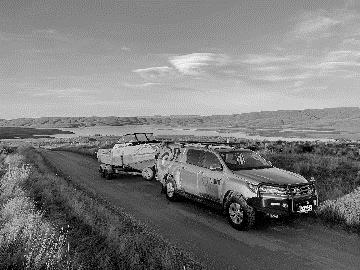
NIWA informed Phase I of MBIE’s NZ Battery Project feasibility study at Lake Onslow in Central Otago.
Outputs included an environmental baseline study which included a bathymetry survey, monitoring the effects of weather and climate on the lake, hydrodynamic modelling, a fish food-web study, examining the impacts of pumped hydroelectric energy storage on lake ecology, assessing macrophytes and potential biosecurity issues, and a review of potential greenhouse gas emissions.
In addition to the baseline study, NIWA led a nationwide GIS scan of potential sites for pumped storage systems and assessed the variability and correlation between the potential for hydro, wind and solar energy under future climate scenarios. The study aims to help solve New Zealand’s dry year electricity issues by supporting hydroelectricity generation when there is insufficient water storage in existing hydropower lakes.
Modelling renewable energy production

Forecasting to maximise renewable electricity generation

A high-resolution weather re-analysis is creating a dataset for modelling renewable energy production that more closely mirrors Aotearoa New Zealand’s complex terrain and the intricate atmospheric processes that drive our local weather and climate. The reanalysis will be used to simulate likely energy yields at different times of the year in different locations. Improved long-term averages of wind, better information about expected cloud cover, and more accurate rain and snowfall data will help quantify capacity for producing wind, solar and hydroelectric power.
NIWA has supplied Mercury Energy with rainfall outlooks for New Zealand's main hydro catchments (Manapouri, Clutha, Waitaki and Tongariro) every week since 2017. Mercury is one of several companies to benefit from bespoke NIWA forecasting. In mid-2022, Mercuria Energy approached NIWA for forecasting services, signing a contract for short-, medium-, and long-range catchmentlevel predictions. Bespoke forecasts are used by energy companies to make operational and long-term planning decisions that can help them maximise their renewable energy output. This is especially important as demand for renewable energy grows in the face of our changing climate and increasing pressure to cut our greenhouse gas emissions.
PROJECT KEY ACHIEVEMENTS SECTOR IMPACT
High-resolution drought forecasting

NIWA and the Ministry for Primary Industries are working together to develop a new drought forecasting tool which uses innovative climate modelling, the latest in machine learning and other data-driven techniques.
The tool updates daily to provide forecasts at a much higher spatial resolution than previously available. This will enable the provision of district-level predictions of dryness and drought. It will help farmers and growers better prepare for periods of dryness and drought, contributing not just to their bottom lines, but also to their own wellbeing and animal welfare.
New forecasting tool for the Pacific
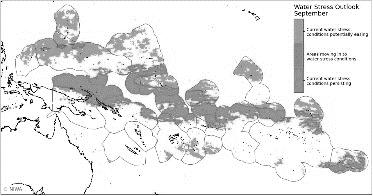
This first-of-its-kind drought monitoring and forecasting system for the Pacific region uses near real-time satellite rainfall monitoring and combines it with a state-of-the-art multimodel ensemble seasonal forecast system.
Satellite rainfall data is downloaded daily and processed on NIWA’s High-Performance Computer. Regional and country-level maps are generated for several drought monitoring indices and products, and interpretive products showing what is changing across the region are also produced to help inform decision making. The forecast information will help many Pacific island meteorological services and regional non-governmental institutions improve their forecasting capabilities, helping them anticipate and more proactively respond to areas at risk of potential water stress.
Upgrading global forecasting systems

A major update to Cylc, the software that orchestrates the scientific workflows behind EcoConnect, is the result of a significant threeyear re-engineering effort. EcoConnect is NIWA's specialist environmental forecasting and information service. It specialises in the creation and delivery of past, present and future environmental information. Cylc was designed more than a decade ago for use in weather, climate and environmental forecasting systems. The open-source software is used throughout the Unified Model partnership, an international collaboration led by the UK Met Office to improve global atmospheric models and forecasting. The new version, Cylc 8, is built on modern web technologies and has a range of new, efficient features that make it perform much better than its predecessor.
Enable New Zealand to adapt to the impacts and exploit the opportunities of climate variability and change and mitigate changes in atmospheric composition from greenhouse gases and air pollutants
PROJECT KEY ACHIEVEMENTS SECTOR IMPACT
Minimising COVID-19 transmission through improved ventilation

As COVID-19 transmission became widespread in the community in 2021, NIWA air quality researchers responded to an urgent need across government to understand and improve indoor air quality to reduce virus transmission. The team worked with the Ministry of Education to investigate and advise on the best ways to ventilate classrooms and other shared spaces to minimise the transmission of COVID-19. This work directly informed Ministry of Education ventilation guidance to schools and has led to a contract with the Ministry of Health to provide guidance across other sectors, including early childhood education, healthcare settings and aged care.
Informing New Zealand’s climate change projections

NIWA was part of a multi-agency and science community collaboration to extract and interpret information relevant to New Zealand from the Working Group 1 contribution to the Intergovernmental Panel on Climate Change (IPCC) Sixth Assessment Report, ‘The Physical Science Basis’, published in August 2021. The report distilled the New Zealand-relevant information from the IPCC report to update what we know about the effects of climate change on New Zealand, ahead of the production of updated regional climate projections for New Zealand due in 2024.
Predicting future marine heatwaves
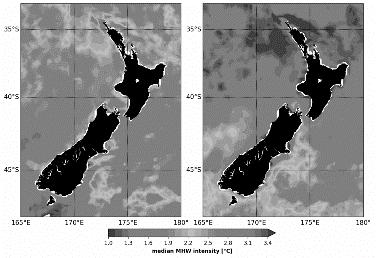
New research shows New Zealand could experience very long and very severe marine heatwaves by the end of this century. Analysis indicates an 80–100% increase in marine heatwave intensity by the end of the century for all analysed coastal regions under the high-emission scenario, which could become permanent year-round by the end of the century. The research gives locally relevant and coastal insights into climate impacts on our oceans and informs planning on adapting to our changing world.
Enhance the stewardship of New Zealand’s freshwater and marine ecosystems and biodiversity
PROJECT KEY ACHIEVEMENTS SECTOR IMPACT
Mitigating agricultural run-off The ambitious five-year MBIE-funded project to develop a comprehensive set of performance and design guidelines for constructed wetlands intercepting diffuse run-off from pastoral farms was completed in May 2022. The Interceptor project produced the Constructed Wetlands Guide, endorsed by regulating agencies to encourage more uptake of wetlands and riparian buffers. The primary sector is under pressure to meet new water quality regulations and improved methods to manage agricultural runoff. Wetlands and riparian buffers are two tools which can help land users meet those expectations. The Interceptor Project provides case studies of constructed wetlands from around the country which stand as good examples for land users to follow.

Co-management and restoration of our freshwater taonga species

Cultural Keystone Species (CKS) was a fouryear (2016–21) MBIE-funded research programme that scaled up and built on the freshwater taonga species research that NIWA has been undertaking with whānau, hapū and iwi around the country over the previous decades.
It has co-developed research methods, tools and products with whānau, hapū and iwi that inform new and innovative management approaches for the protection, restoration and economic development of CKS. The programme supported at least 30 researchers working in partnership with 20 hapū/tribal entities, seven consultancies, two power companies and 15 regional and central government agencies.
Milestones from the CKS programme include significant advances in understanding the water quality and habitat needs of juvenile tuna, kōura and kākahi; new methods for understanding state and trend analyses that are directed by mātauranga Māori and informed by hapū-driven datasets; and research that enables improved tuna, kōura and kākahi restoration and management actions.
Sustainably managing scallop fisheries

Beyond the commercial value, tipa (scallops) also play an important ecological role in helping keep the water clean. Following concerns raised by iwi and communities in northern New Zealand, NIWA experts contributed to a significant management decision made in 2021.
Using results from NIWA-led surveys, which revealed the critical condition of some scallop populations, the Minister decided to fully close the fisheries in Northland, as well as much of the Hauraki Gulf and Coromandel. Although limited areas remain open to commercial and recreational fishing, the closures will hopefully allow the northern tipa populations to recover. In an effort to reduce some of the known impacts of dredging for tipa, NIWA is also exploring and developing new technologies based on cameras and machine learning, with the aim of finding alternatives to dredging methods, allowing more sustainable scallop fishing.
Increase understanding of the Antarctic and Southern Ocean climate, cryosphere, oceans and ecosystems and their longer-term impact on New Zealand
PROJECT KEY ACHIEVEMENTS SECTOR IMPACT
Safeguarding Antarctic ecosystems

Drilling beneath the ice to understand climate change impacts

Increasing our seabird knowledge
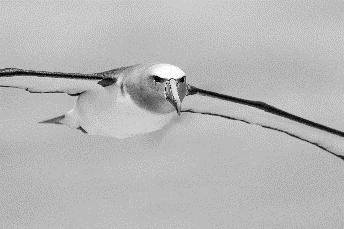
NIWA Antarctic research balancing environmental protection, sustainable fishing and science interests has contributed significantly to protection of the Ross Sea, the world’s largest Marine Protected Area (MPA).
Led by a NIWA research programme called RossRAMP, the first five-year compilation of New Zealand research associated with the MPA was delivered in February 2022 to the Commission for the Conservation of Marine Living Resources (CCAMLR).
New Zealand provided the highest number of projects from all CCAMLR members, with much research funded or co-funded by NIWA’s Ross-RAMP. This included more than 13 scientific publications and over 30 presentations. The Ross Sea MPA sets out to conserve the area’s ecology, mitigate threats to ecosystems from fishing, and provide a reference area to better gauge the effects of fishing and climate change over time. The MPA will cease in 2052, and proof of its effectiveness is needed for it to continue beyond this period.
Every winter in Antarctica, two-metre-thick sea ice forms. The layer of ice crystals directly beneath the sea ice, called the sub-ice platelet layer, provides a habitat for algae, eggs and larvae of fish.
Scientists from NIWA, the University of Otago and Victoria University of Wellington, funded by the Antarctic Science Platform, are investigating the distribution of the platelet layer under the ice, and how this varies with time. In 2021–22 the team developed and tested a bespoke engineered device called the Sympagic Sampler to take platelet samples. This huge drill collects core samples of the delicate platelet structure. The samples allow the team of scientists to study the platelet ice habitats and the conditions necessary for them to form. Any small shift in the environment could change where, when and even if, the platelet ice forms. Such impacts could have major implications for the animals that need the ice to survive, with knock-on effects for the wider Ross Sea marine ecosystem.
Seabirds are a key and poorly understood part of our marine ecosystems, with many species threatened or data deficient. NIWA research has significantly contributed to our better understanding of habitat use and foraging habits of many iconic New Zealand species that can be found along our coastlines, and our Sub-Antarctic and Polar frontal zones.
Celebrating its 30-year anniversary in 2022, one longterm study of Buller’s albatross has allowed better understanding of the significance of accidental bycatch of seabirds by commercial fishing vessels. This has been achieved by building an impressive database of encounter histories for breeding birds, and deploying and retrieving tracking devices. NIWA’s contribution to seabird research, particularly on long-lived species with low-reproductive outputs, is far-ranging and high impact, and has significantly advanced our knowledge of seabird ecology and links to climate change in the last few decades.

Recirculating Aquaculture Systems (RAS) answer the call for a more sustainable aquaculture industry and to help the industry meet its goal of $3 billion by 2035. NIWA’s experimental, commercial-scale RAS at the Northland Aquaculture Centre is on track to produce 600 tonnes of kingfish annually in 2023. [CB Civil]



